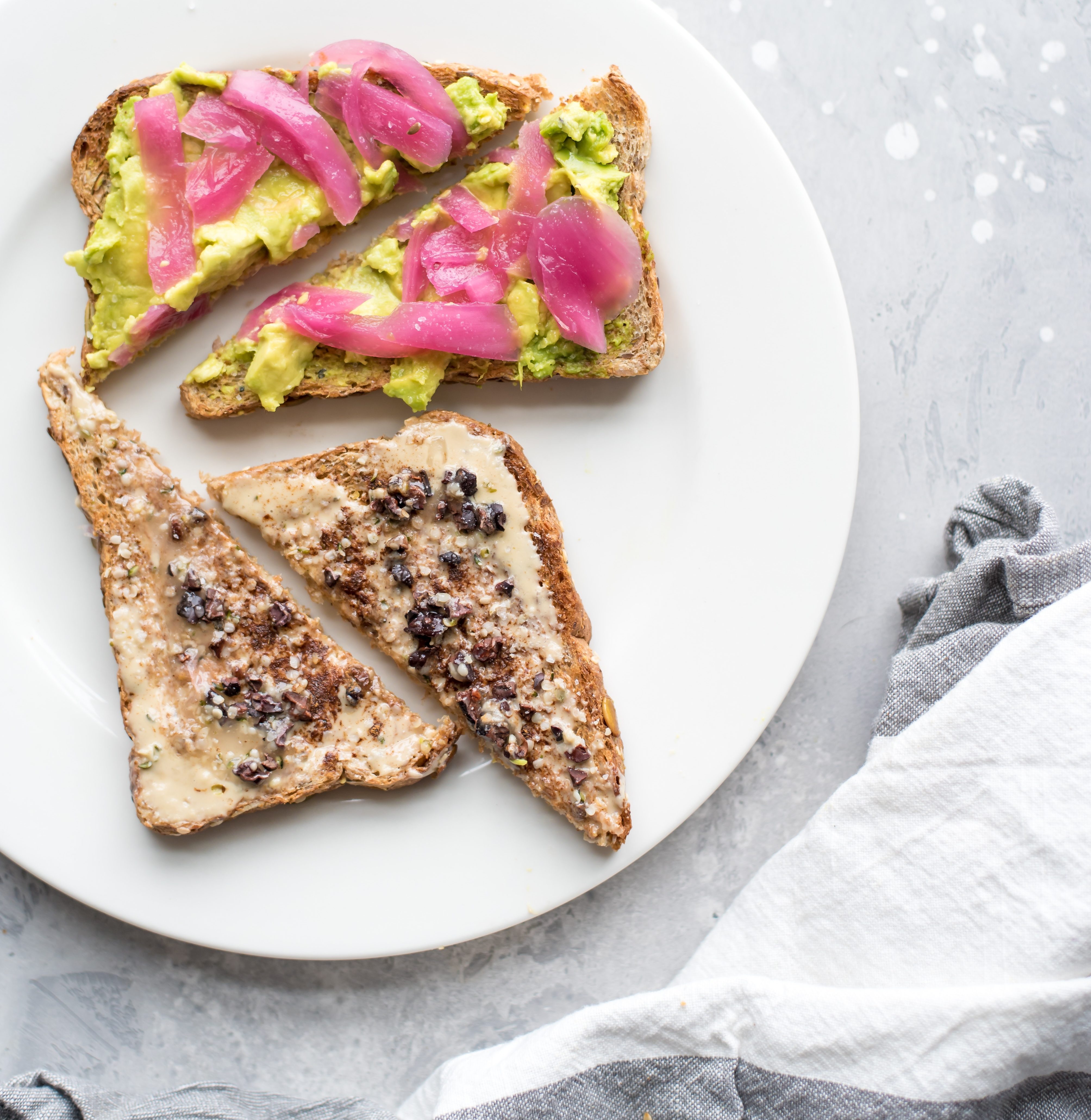Your new client walks in and says, “I’ve been following [insert a diet here], and I’d love to know your thoughts on it!
Take a deep breath! We know there are a ton of different diets out there (not to mention endless information about each diet), and you’re not expected to know everything about every single one.
If you’re an ITN student or graduate, you have your handy dandy “150 Diet Theories” reference guide. However, if you’re not, here is a list of twelve popular diets you’ll hear circulating around the industry.
We’ll give you the lowdown on what the diet consists of, the benefits, and the drawbacks, so you’re ready to help your clients decide if a specific dietary protocol is a healthy choice for them, or not.
Please Note: Neither this article nor the Institute of Transformational Nutrition recommends one single diet for every person.
Instead, we encourage you to take a look at your client’s nutritional needs to make sure they’re getting met through whatever diet they choose.
This is why we believe in and teach personalized nutrition!
Let’s dive in!
12 POPULAR DIETS TO KNOW AS A HEALTH COACH
1. VEGAN DIET/PLANT-BASED DIET
A vegan diet excludes all animal products as well as animal-derived ingredients including meat, fish, eggs, and dairy products.
The diet is comprised mainly of plant-based foods like vegetables, fruit, beans, and legumes as well as grains.
It’s also important to note that many vegans also avoid the use of all products tested on animals and animal-derived products such as leather, fur, and wool.
- Benefits: By focusing mainly on plant-based foods, this diet can be very high in fiber, vitamins and minerals, and low in processed foods. It can help you maintain a healthy weight and prevent the onset of disease because you are avoiding the high-calorie content of animal foods. You are also eliminating any exposure to factory farmed meat, which can be toxic.
- Drawbacks: Vegan diets can be low in some essential nutrients, like B12 and iron. They can also be high in processed foods and carbs if you’re not careful to eat properly balanced meals or have to opt for quick/fast food choices when you’re on the go and can’t find healthy vegan options or restaurants.
2. GLUTEN-FREE DIET
A gluten-free diet is a diet that excludes carbohydrates that contain the protein gluten. Gluten is found in grains such as wheat, barley, rye, and triticale.
- Benefits: In individuals who are intolerant or sensitive to gluten, this dietary approach can decrease inflammation in the body and eliminate symptoms like cramping, bloating, joint pain, etc. By eliminating many of the foods that contain gluten (like bread, cookies, cakes, etc.), it can also be a very healthy diet.
- Drawbacks: A gluten-free diet can also be unhealthy if the gluten-containing items are merely replaced with “gluten-free” versions of things like muffins and cookies. Very often “gluten-free” foods are void of nutrients and high in processed additives and chemicals.
3. PALEO DIET
Also known as the “caveman” diet. This diet is based on that of the hunter-gatherer of the Paleolithic era.
This approach Includes fresh meats (preferably grass fed or free range), fish, seafood, fruit, vegetables, seeds, and nuts, plus healthy oils.
It does not include dairy, cereal grains, legumes, refined sugars, or processed foods.
- Benefits: The Paleo Diet is high in protein, and therefore low glycemic, which is beneficial for blood sugar and weight loss. It’s high in fruits and vegetables, which are rich in vitamins and nutrients, and full of Omega-3 fatty acids which can decrease inflammation.
- Drawbacks: Given that this diet is focused on animal protein, it can be high in saturated fat if red meat is the primary source of animal protein as opposed to lean choices like chicken. It can also be low in fiber given that it excludes grains and legumes, which can create digestive issues.
4. VEGETARIAN DIET
A vegetarian diet tends to be less strict than a vegan diet – it generally refers to a diet where a person does not consume animal products like meat and fish.
Most vegetarians do consume eggs and milk, and some consume only sea animals like fish while avoiding only land animals
There are many different levels/types of vegetarianism:
- Lacto vegetarian: Consumes dairy products, like milk, cheese, and butter.
- Lacto-ovo vegetarian: Consumes dairy and eggs
- Ovo –vegetarian: Consumes eggs only.
- Benefits: Like the vegan diet, the vegetarian diet can be very healthy when followed correctly because it is very high in plant-based foods, and avoids any saturated fat. Some of the benefits can include decreased risk of certain diseases (like cardiovascular disease and some cancers), increased longevity, weight loss, and improved skin.
- Drawbacks: Like vegan diets, it can be low in B12 and iron without proper supplementation. It can also be high in processed foods and carbohydrates if they are substituted for protein, rather than healthier versions like grains, nuts, and seeds.
5. RAW DIET
A raw diet consists of foods (typically produce, grains, seeds, nuts, and beans) that haven’t been heated above a specific temperature — usually between 104 and 118 degrees.
“Raw foodies” believe that foods cooked above this temperature have lost their enzymes, and thus, a significant amount of their nutritional value, making them harmful to the body. They believe that uncooked foods provide living enzymes and proper nutrition.
- Benefits: This approach is comprised of foods that are the richest sources of valuable nutrients. It renounces most processed foods eliminating trans fat and generally provides very low levels of saturated fat, sodium, and sugar while providing nutrient-dense foods rich in fiber. The benefits of eating raw foods include weight loss, more energy, clear skin, improved digestion, and improved overall health.
- Drawbacks: This approach is very limited in variety and also be challenging to follow in colder climates. Some food’s nutritional content benefits from cooking (i.e., lycopene in tomatoes). The Raw Diet requires a lot of organization and preparation to follow. It may also irritate some digestive issues, such as IBS.
6. MEDITERRANEAN DIET
This diet refers to the dietary patterns typical in some Mediterranean regions, including Crete and other parts of Greece and Southern Italy.
The reason these dietary patterns are singled out is that the adult life expectancy of these areas was once among the highest in the world, with rates of coronary heart disease among the lowest in the world at one time.
This approach consists of lots of plant foods, fresh fruit as dessert, high consumption of beans, legumes, nuts, seeds, olive oil (as the primary source of fat rather than butter), cheese, yogurt, moderate amounts of fish and poultry, no more than four eggs per week, small amounts of red meat per week, low to moderate amounts of wine, 25-35% of calorie intake from healthy fats, and a low intake of saturated fat (less than 8%).
- Benefits: Research has shown that the traditional Mediterranean diet is especially effective at reducing the risk of heart disease, as well as cancer, Parkinson’s, and Alzheimer’s disease.
- Drawbacks: While the diet is generally one of the most well-rounded diet plans and can work for both vegetarians as well as meat eaters, it may not work well for people with specific food intolerances.
7. THE LOW GLYCEMIC DIET
This approach is based on the glycemic index; known as the glycemic index diet or GI diet. The Low Glycemic Diet suggests that foods and beverages with a low glycemic index (GI) help to keep your blood sugar balanced, which helps with weight loss and risk factors for certain chronic diseases such as Diabetes.
It emphasizes unprocessed foods, complex carbs, and food combining. The glycemic index classifies carbohydrate-containing foods according to their potential to raise your blood sugar level.
- Benefits: Studies have found that a low glycemic diet was effective at maintaining healthy blood sugar levels. This is one of the most effective among popular diets at aiding with weight loss. It helps to prevent the development of insulin resistance, which is associated with Type 2 Diabetes, obesity, high blood pressure, stroke, and heart disease.
- Drawbacks: It doesn’t rank foods according to how healthy they are. For instance, some candies with nuts score lower than potatoes, brown and white rice score the same as do white and whole wheat bread, and healthful foods like carrots and ripe bananas receive high scores while table sugar has a medium score. It ranks foods in isolation, yet the way your body absorbs carbohydrates depends on several factors, including portion size, as well as the presence of fiber, fat, and protein, which help to slow the absorption. Not all foods are listed on the GI index, so it may be difficult to assess their glycemic impact, especially packaged foods, which don’t have a glycemic index on the packaging.
8. KETOGENIC DIET
The Ketogenic Diet promotes ketosis, a metabolic state in which the body produces higher than average amount of ketone bodies, which means that the body uses fat instead of carbohydrates as fuel.
It aims to promote fat loss by forcing the body to break down fat as needed for fuel in place of carbohydrates.
The state of ketosis is controlled by insulin, glucagon, and blood glucose levels. The theory behind ketosis states that because the body does not have to secrete insulin to control blood glucose levels, sugar levels stay normal and do not bounce up and down.
- Benefits: This approach eliminates excess sugar and processed carbohydrate intake. It has been shown to decrease blood sugar levels, help to keep blood sugar levels stable, and reduces hunger.
- Drawbacks: Eliminating carbohydrates decreases fiber intake as well as many vital vitamins and minerals. It may promote an acidic internal environment as many carbohydrates act as an alkalizing agent. Energy levels may fall as the carbohydrates (glucose) are the body’s primary source of preferred fuel; some women may experience missed periods until carbohydrates are reinstated in the diet.
9. AUTOIMMUNE DIET
The Autoimmune Diet aims to help heal the immune system and gut flora from autoimmunity caused by inflammation.
It’s suggested that you follow this protocol for a 6-8 week period in which no cheating is “allowed”.
Restricted foods include nuts, seeds, beans/legumes, grains, sweeteners, dried fruit, dairy, all processed foods, alcohol, chocolate, eggs, nightshades, vegetable oil, gums, and tapioca.
Encouraged foods include vegetables (except nightshades), fruits (limit 20 grams fructose/day), certain coconut products, olive oil, fermented foods, bone broth, grass-fed or wild meat, poultry and seafood, non-seeded herbs and teas, and vinegar.
- Benefits: This approach eliminates processed foods. Staying on the diet for 6-8 weeks is long enough to know whether or not it will be a fitting lifestyle for you or your client. It has been shown to heal gut inflammation, in which 70 percent of the immune system resides, thus promoting remission of many autoimmune diseases.
- Drawbacks: Eliminates nutrition and fiber provided from certain food groups, such as whole grains and legumes. Some may find this diet difficult to maintain as a day to day approach.
10. THE LOW FODMAP DIET
FODMAPS are foods that contain fructose (fruits, honey, HFCS), lactose (dairy), fructans (wheat, garlic, onion, inulin), galactans (legumes, lentils, soybean), polyols (avocado, apricots, nectarines, peaches, cherries, plums).
FODMAPS are osmotic, meaning that they pull water from the digestive tract! When eaten in access, they may become fermented by bacteria in the intestinal tract.
- Benefits: This approach promotes a low sugar diet, which may help aid in weight loss and decrease blood sugar spikes. It also may help aid in digestive issues by removing foods that have become fermented in the gut. A Low Fodmap diet helps to eliminate foods that are otherwise poorly absorbed by the body.
- Drawbacks: Limits several foods that are high in fiber and key nutrients. Allows rice and several grains that may aggravate individuals with digestive issues. Allows fatty meats, such as ham and beef, with no restrictions on being grass-fed or raised without antibiotics.
11. WHOLE FOODS DIET
The Whole Foods Diet consists of eating a diet made up of foods that are in their most natural state, and avoiding foods that are processed.
- Benefits: Foods typically included in this approach tend to be organic and high-quality, fresh produce, whole, unprocessed grains, nuts, seeds, beans and legumes, animal proteins, and animal byproducts such as eggs and milk. This dietary approach tends to increase plant foods and emphasizes whole foods, which can help curb cravings for sugar and junk food. Many of the items found in a Whole Foods Diet are full of minerals, vitamins, and anti-oxidants.
- Drawbacks: It may be challenging to find organic produce for some people. Transitioning from processed foods to whole foods may be difficult for some people, but it’s so worth it.
12. ELIMINATION DIET
The Elimination Diet involves a 21-Day elimination period where all highly reactive goods are eliminated, including wheat, gluten, soy, eggs, corn, and dairy.
After the 21-Day elimination, you follow a very specific plan to test each food and re-introduce “safe” foods back into your diet.
- Benefits: Food sensitivity is a big topic these days due to all of the over-processed and over-used ingredients in our food supply. This “diet” deals with this very real issue that creates a chronic inflammatory state in the body that can lead to weight loss resistance, as well as, other symptoms and eventually illness. Due to the foods eliminated, especially wheat and gluten, weight loss is often experienced after following this diet plan.
- Drawbacks: This type of weight loss plan doesn’t address the lifestyle, emotional, and habitual aspects of weight loss. There is a good chance that when someone is finished, they will binge on their favorite foods after having completely avoiding so many things for so long. It may be unrealistic or too difficult for many people to refrain from eating the foods they’re intolerant to on a permanent basis.
THE PERFECT DIET
That wraps up twelve popular diets you’re likely to hear as a Health Coach!
Remember that when you’re co-creating a plan with your clients (we like to call that personalized coaching), it’s important to take into account their condition, lifestyle, and needs to ensure they are going to be as successful as possible when adhering to a specific dietary approach!
What diets have you heard your clients talking about? Tell us in the comments below!
Are you ready to learn how to personalize nutrition and coaching for your clients? Or perhaps you’re finally ready to become a coach? Head here to Discover Your Dream Career!




+ show Comments
- Hide Comments
Free Resources
Take A Look at the latest from ITN:
Courses
add a comment